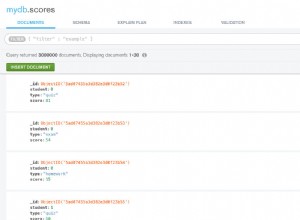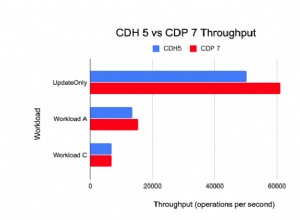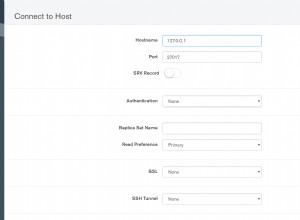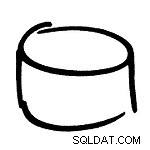Para lograr el resultado deseado, comience desglosando la consulta SQL comenzando con la subconsulta:
Select *
from tblData
Where TFN in (Select TFN From @tmpTFNList) and TrendDate between @StartDate AND @EndDate
La consulta mongo equivalente sigue:
db.getCollection("_core.data").aggregate([
{
"$match": {
"TFN": { "$in": tmpTFNList },
"TrendDate": {
"$gte": startDate,
"$lte": endDate
}
}
}
])
El $group
equivalente agregado de
Select TFN, Max(Impressions) MaxImpression
from tblData
Where TFN in (Select TFN From @tmpTFNList) and TrendDate between @StartDate AND @EndDate
Group by TFN
sigue
db.getCollection("_core.data").aggregate([
{
"$match": {
"TFN": { "$in": tmpTFNList },
"TrendDate": {
"$gte": startDate,
"$lte": endDate
}
}
},
{
"$group": {
"_id": "$TFN",
"MaxImpression": { "$max": "$Impression" }
}
}
])
Las 5 consultas principales
Select Top 5 a.TFN, a.MaxImpression as MaxCount from (
Select TFN, Max(Impressions) MaxImpression
from tblData
Where TFN in (Select TFN From @tmpTFNList)
and TrendDate between @StartDate AND @EndDate
Group by TFN
) a
es posible con $limit
operador y la selección de campos a través del $project
actuar como
db.getCollection("_core.data").aggregate([
{ /* WHERE TFN in list AND TrendDate between DATES */
"$match": {
"TFN": { "$in": tmpTFNList },
"TrendDate": {
"$gte": startDate,
"$lte": endDate
}
}
},
{ /* GROUP BY TFN */
"$group": {
"_id": "$TFN",
"MaxImpression": { "$max": "$Impression" }
}
},
{ "$limit": 5 }, /* TOP 5 */
{ /* SELECT a.MaxImpression as MaxCount */
"$project": {
"TFN": "$_id",
"_id": 0,
"MaxCount": "$MaxImpression"
}
}
])
ACTUALIZAR
Para obtener el resultado deseado de la muestra en esta editar
, necesita un $sort
tubería antes del $group
donde ordena los documentos por TrendDate y Impression campos, ambos en orden descendente.
Luego deberá usar el $first
operador acumulador dentro del $group
etapa de canalización para obtener la máxima impresión, ya que tendrá un flujo ordenado de documentos en su canalización.
Considere ejecutar la operación agregada revisada como:
db.getCollection('collection').aggregate([
{
"$match": {
"TFN": { "$in": tmpTFNList },
"TrendDate": {
"$gte": startDate,
"$lte": endDate
}
}
},
{ "$sort": { "TrendDate": -1, "Impression": -1 } },
{
"$group": {
"_id": "$TFN",
"MaxImpression": { "$first": "$Impression" }
}
},
{ "$limit": 5 },
{
"$project": {
"TFN": "$_id",
"_id": 0,
"MaxCount": "$MaxImpression"
}
}
])
Salida de muestra
/* 1 */
{
"TFN" : 84251456,
"MaxCount" : 22
}
/* 2 */
{
"TFN" : 84251455,
"MaxCount" : 35
}




